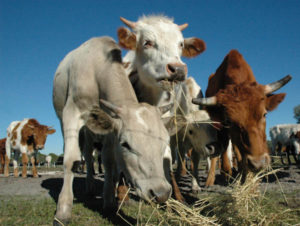
When I first decided to make homemade Marshmallows I automatically hit a road block: Gelatin. My first thought was, man, this stuff smells bad! Then I took a trip down memory lane back to high school, when my good Vegan friend told me exactly what gelatin is and why we should not eat it. “It’s ground up animal bones!” Nuf said. I wasn’t about to go Vegan but ground up animal bones, really? Holy cow!
Really. Gelatin is actually derived from the collagen that’s extracted from not just the bones, but skin, organ tissue, and some intestines of domestic animals. Pigs, Cows, and even horses! This didn’t seem like something I would want in my products. Gelatin is most commonly found in jello-desserts, gummy candies, and in marshmallows.
Immediately I searched for a solution. Seaweed. Yes, it was that easy, something as gross and smelly as gelatin could be substituted by a plant. Meet agar agar, which is derived from algae or seaweed and it’s cheaper, with no smell! Agar agar comes in flake, bar, or powder form and can be substituted equal parts for gelatin. I usually buy the powder, which can be found at specialty grocery marts in the Asian food section. When mixed with water, the powder needs to be heated slightly and cooled down again before it reaches its gelatinous state.
Proudly, Lady Chocolatier uses agar agar instead of gelatin in all of our marshmallow products. This includes Smores’ Bites and now Krispie Bites!
Very interesting post 🙂
Good blogging!
I cant stomach store bought marshmallows, and I know it’s a texture thing with me. That’s what’s so great about your marshmallows, is that the creamy soft texture isnt to sticky or sweet. Love em!
Is Horse Hoofs mixed in jello … NO! Gelatine (jello) is made from the rendered (boiled) bones, skin, ligaments and tendons of cows and pigs slaughtered for meat. …
HORSES are no not in Jello..
On May 24, 2007, the last slaughterhouse in the USA producing horsemeat for human consumption was closed by State statute (1). Recently there have been several state and federal regulatory initiatives in the USA intended to prevent the slaughter of horses for human consumption (2,3). On January 27, 2007, simultaneous bills were introduced in the Senate and the House to prohibit the slaughter of horses for human consumption and to ban the transport of live horses from the United States to countries where they could be slaughtered for human consumption (2). The American Veterinary Medical Association (AVMA) and the American Association of Equine Practitioners (AAEP) are pursuing defeat of these amendments to the Horse Protection Act (2,4,5).
A commercial market for horsemeat as food has never emerged in the USA. The slaughter of horses in the USA for overseas markets had been on the decline prior to the recent multistate regulatory successes of the anti-horse-slaughter movement. In the 1980s, more than 300 000 horses were processed annually in 16 federally inspected plants, while in 2006, 105 000 horses were slaughtered for human food in the remaining abattoirs, 2 in Texas and 1 in Illinois (2). On average, 60 000 horses (25 000 of US origin) are killed at Canadian slaughterhouses each year (10,12) and 11 000 United States’ (US) horses are sent to Mexican slaughterhouses annually (2).
Barb, thanks for adding to this conversation!
Rendering plants handle dead animals, including horses. These plants render these dead horse into gelatin, glue and other commercial products. Rendering facilities are separate from the slaughter houses that have been closed by state and federal law.
Unfortunately, the bill you mentioned, HR503, does not prohibit the rendering of horses into commercial products such as glue or gelatin.
Thanks for your reply’s and information on this matter. This post was not intended to offend anyone or state false information. I was only restating what is clearly written in Wikipedia regarding the production of gelatin. The purpose of this post is to point out that I believe gelatin is gross and why. And for those reasons I intend not to use it in my confections.
hey…I live in San Francisco…where can I find it here?
If your looking for Agar Agar I would suggest looking at any Asian markets.
Reading your article about agar products instead of gelatin ones, what do you think of the gummies made from agar agar? I have seen it is difficult to find them at the stores, is this market not so attractive? have you manufactured this gummies? what is your experience with these?
thanks,
veronica,
I get agar agar at my local health food co-op, where they sell it in packages, and in the bulk bins.
Nice post. ladychocolatgier.net is killer.
Veronica, sorry for the HUGE delay. I have never tried gummies with agar agar before. I have also never attempted to make gummies before. You could try to substitute agar for gelatin in any recipe but may have to make several batches to play with the amounts of agar. Some people have said you can sub equal amounts but I will have to disagree. I do have a book called Chocolates & Confections by Peter P. Greweling, CMB; which has a recipes for agar jellies and agar fruit slices.
great posting but you left info out. What is the recipe! and can you do it with corn starch. Its nice to have a little jar of gummies made of juice and agar or cornstarch, but how long can it sit there, or does it go in the frigde?Hmmmmmmm?